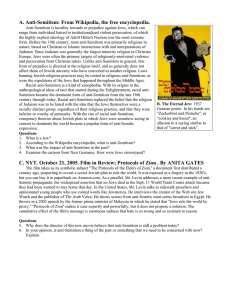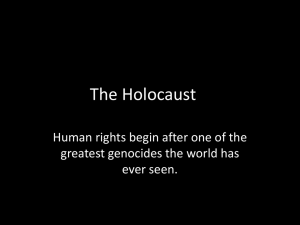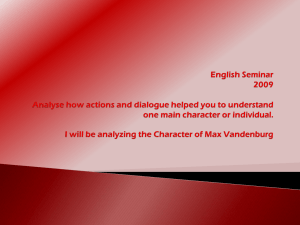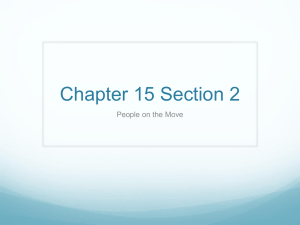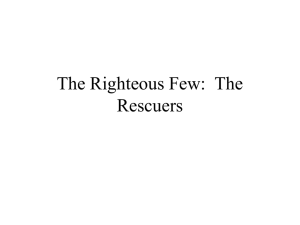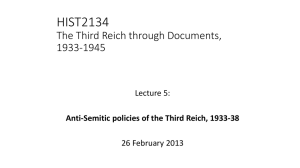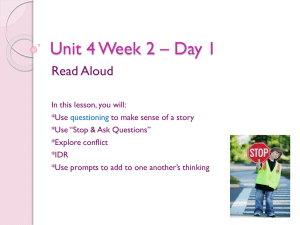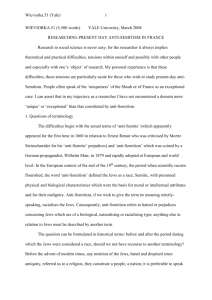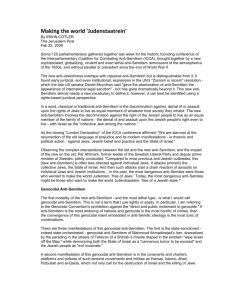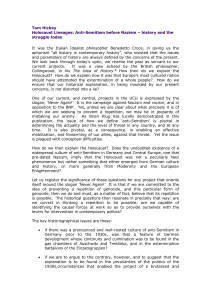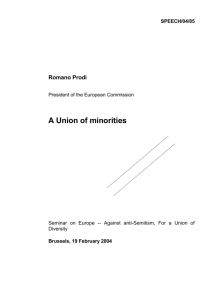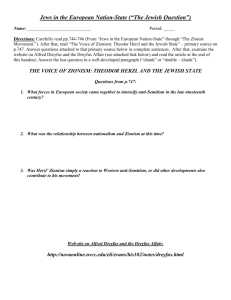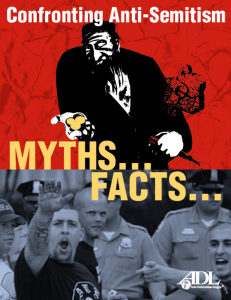PowerPoint Presentation - A Holocaust Overview
advertisement
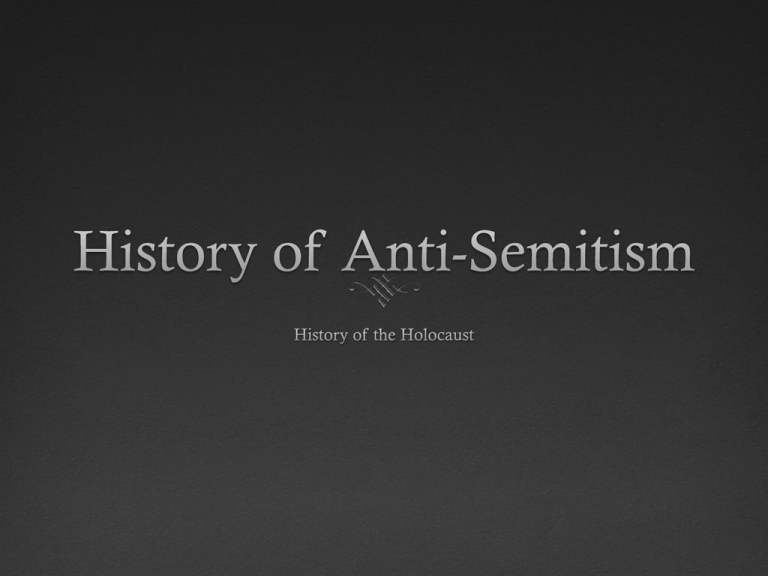
History of Anti-Semitism Cultural differences made the Jews standout Only monotheistic religion Refusal to accept dominant religion Labeled by the Romans as “stubborn,” “clannish,” and “hostile” History of Anti-Semitism As Roman pressure on the Jews mounted, some urged rebellion—while others (like Jesus) suggested a reforming of ways 30 CE –Jesus is killed, disciples separated themselves from Judaism Christian-anti-Judaism grows as Christians are made up of more gentiles (non-Jews) than former Jews 70 CE– Jewish Diaspora (forced exile) from Jerusalem after failed revolt against Rome History of Anti-Semitism 325 CE - Christianity becomes official religion of the Roman Empire. Jews negatively portrayed. Refused to convert to Christianity despite insistence of Church 5th-7th Centuries - Violence escalates “contamination” laws Could not hold public office Or show themselves during Holy Week Justinian Code 527-625 Forbade reading of Torah in Hebrew History of Anti-Semitism Middle Ages - Jews less than human, killed in the Crusades, demonized, blamed for Black Death Renaissance/Reformation - Jews had to wear badges or cones on head, in Italy and Germany they were separated into ghettos Council of Basel (1431-43) established ghettos, required to attend Christian services Spanish Inquisition (1478-1765), 1492 expulsion from Spain History of Anti-Semitism Blood libel—the idea that Jews used the blood of Christian children for the Passover meal Used as an excuse to attack Jewish communities History of Anti-Semitism Many occupations were closed to Jews Not allowed to own land, no farmers Trading guilds—not allowed to join Money lending (banking) Was considered a sin by Christians Given jobs as tax collectors, Usury—charging interest for loans Caused deep hatred among peasants History of Anti-Semitism The Protestant Reformation Martin Luther called Jews “poisonous, bitter worms” Suggested they be forcibly converted or expelled from Germany First their synagogues or churches should be set on fire…Secondly, their homes should likewise be broken down and destroyed…They ought to be put under one roof or in a stable, like gypsies…Thirdly, they should be deprived of their prayer books…Fourthly, their rabbis must be forbidden under threat of death to teach anymore… Of Jews and Their Lies, Martin Luther History of Anti-Semitism Enlightenment (Age of Reason) 1700s Jews were allowed out of the ghettos 1791 Jews got full citizenship in France Although they gained more rights—had a hard time joining “outside world,” spoke Yiddish Instead of religion, “science” and “reason” found differences between Jews and non-Jews History of Anti-Semitism French diplomat Joseph Arthur Gobineau, father of “modern” racial thought Blamed decline of civilization on interbreeding of superior and inferior racial groups white race or Aryans, peoples speaking IndoEuropean languages Race Replaces Religion Word Anti-Semitism first appeared in 1873 in book Victory of Judaism over Germany by Wilhelm Marr Jews ought to be eliminated because they were members of an alien race Russia and France late 1800s Pogroms, massacres of Jews, ordered by the czar Continued into 20th century Dreyfus Affair--France Dreyfus, the first Jew appointed to general staff was accused of giving info to Germany Pointed out level of anti-Semitism in France Number piece of paper #1-15 and for group write your first reactions to the group. It can be positive or negative—but be honest! No one but you will see this list. 1. Politicians 8. Welfare Recipients 2. Old People 9. Computer Programmers 3. Teenagers 10. Germans 4. Harvard University Students 11. New Yorkers 5. North Carolina State University Students 6. Professional Basketball Players 7. Professional Ballet Dancers 12. Southerners 13. Migrant Workers 14. Democrats 15. Republicans Pick two groups that you felt most strongly about. On the back of paper draw this chart. For each category, see what you hear from each—and where you might have gotten these ideas. Source Personal Experiences/Direct Contacts Conversations with Family Conversations with Friends Television Books/Magazines Movies Group 1 Group 2
